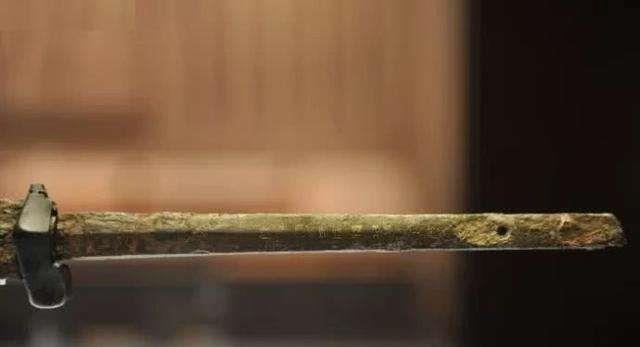In ancient times, the sword was not only a self-defense weapon, but also a symbol of status and status. In ancient times, his identity could be discerned by his sword. One of the swords, which was engraved with the words "Shu" and "Wang", was mistaken by a villager for Zhuge Liang's sword.

In January 1978, Cao Jingzhi, a farmer in Caoshan Village, Pantang Township, Tongshan District, Xuzhou City, Jiangsu Province, when he was mining stones for building pigsty on the southern slope of Tuolong Mountain, he dug out some green bricks, dug up the green bricks, and found a copper mirror, a knife and a sword, as well as some pottery and old copper coins.
As for how Did Cao Jingzhi know that the sword was Zhuge Liang? He said, "There are two inscriptions on the steel sword, one is Shu and the other is Wang. Shu represents the State of Shu, and wang represents Liu Bei, so this sword belongs to Zhuge Liang. Wang Kai was full of doubts about his words, how could Zhuge Liang and others call "Han" "Shu"? He thought that this sword was probably not Zhuge Liang's sword, but he still held a hint of luck.
Under the leadership of Cao Jingzhi, Wang Kai came to the ancient tomb on Tuolong Mountain. He carefully investigated and found that the tomb was a small brick chamber tomb in the late Eastern Han Dynasty, and the original appearance of the tomb had been destroyed. Wang Kai and others collected the cultural relics in the tomb, and Cao Jingzhi said that there was originally a knife, but the knife was lost because it was taken by the children in the family to play. Wang Kai and the others turned the village upside down and did not find it.
Wang Kai interpreted the inscription on the sword: In the second year of the founding of the first year, Wang Yan, a western engineer in Shu County, made the fifty (refining) Sun Sword and unlocked the origin of the sword. Seeing this, Wang Kai confirmed his previous conjecture that this sword was not Zhuge Liang's sword, but a steel sword in the early years of the Eastern Han Dynasty. The inscription on Jianchu is the first era name of Liu Qi, the third emperor of the Eastern Han Dynasty; the second year of Jianchu refers to 77 AD, not the Liu Bei period; and the Fifty Refining refers to the craftsmanship of this sword.
This sword is smelted with the "fried steel" technology, which is a revolution in the history of steelmaking, and is the earliest metallurgical technology in the world so far, which has been invented and widely used in the early Western Han Dynasty. Because it needs to be stirred constantly during the smelting process, like stir-frying, it is called "fried steel".
Fried steel needs to be repeatedly heated and forged, ancient craftsmen will be "fine iron" heating forging, excluding inclusions in the steel, forging again, weighing once, lightening some, until the pound is not reduced, so that its composition tends to be uniform, the organization tends to be dense, and the performance of the steel is improved. This sword is called "Fifty Yu", indicating that it has been forged fifty times.
Before leaving, Wang Kai gave Cao Jingzhi 500 yuan to collect money, telling him that these cultural relics were the treasures of the state's prices and should be handed over. After returning to the museum, experts measured the total length of the steel sword 109 cm, the body length of the sword body 88.5 cm, width 1.1 to 3.1 cm, ridge thickness of 0.3 to 0.8 cm.
It is said that when the steel sword was unearthed, although it had passed nearly 2,000 years, it was still extremely sharp, and with a gentle stroke, the blade penetrated more than ten layers of thick paper. Although this steel sword is not Zhuge Liang's sword, its value is also very important. Previously, archaeologists have dug up the steel swords of the Han Dynasty many times, but there are both inscriptions, chronology and forging standard steel swords, the only one in the country, and its archaeological value is self-evident, which is why it has become the treasure of Xuzhou Town Hall.